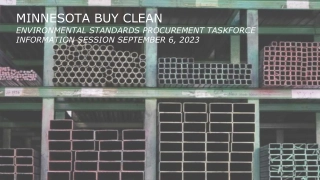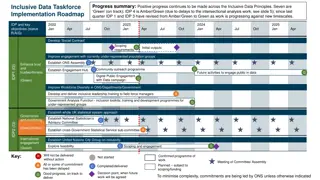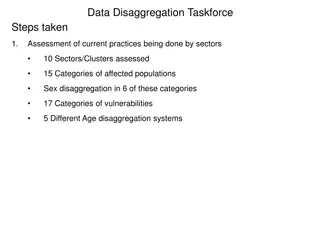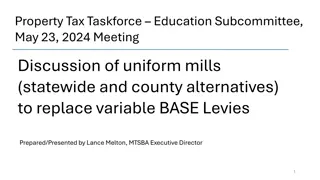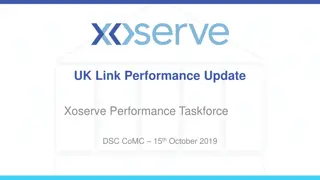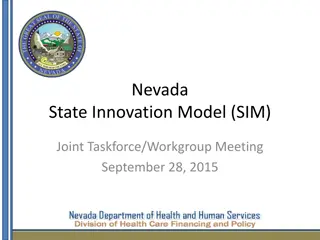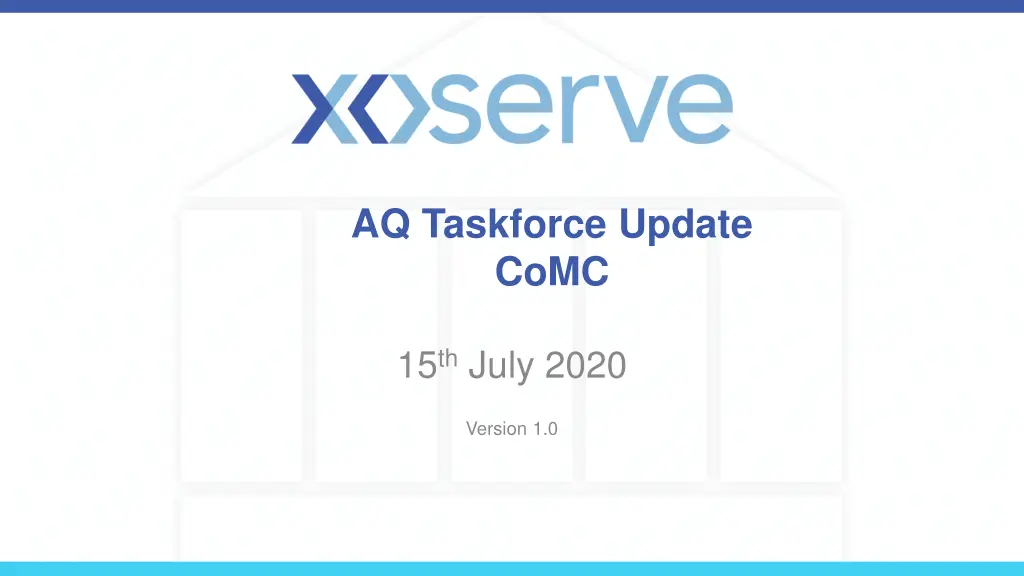
AQ Taskforce Update July 2020
Explore the latest updates from the AQ Taskforce, highlighting the decrease in open defects, ongoing process improvements, and root cause analysis progress. Dive into the details of defect status, resolution rates, and formal root cause analysis.
Download Presentation

Please find below an Image/Link to download the presentation.
The content on the website is provided AS IS for your information and personal use only. It may not be sold, licensed, or shared on other websites without obtaining consent from the author. If you encounter any issues during the download, it is possible that the publisher has removed the file from their server.
You are allowed to download the files provided on this website for personal or commercial use, subject to the condition that they are used lawfully. All files are the property of their respective owners.
The content on the website is provided AS IS for your information and personal use only. It may not be sold, licensed, or shared on other websites without obtaining consent from the author.
E N D
Presentation Transcript
AQ Taskforce Update CoMC 15thJuly 2020 Version 1.0
Summary The number of AQ defects continues to fall with only 12 open defects now being worked on (see AQ Defect Status slide, and Open Defects slide). Following the recent high value capacity adjustments undertaken as a result of Defect 61866 (Incorrect FYAQ values applied), our core focus this month has been to undertake a re-assessment of the internal processes to ensure that all necessary financial adjustments post defect fix/AQ correction are completed. This work has highlighted that a there are potentially c.121,000 MPRNs (predominantly Class 3 & 4) that could be eligible for capacity adjustments. The continuation of this analysis and subsequent development of the technical solutions to enable financial adjustment continue to be worked on. Further detail is provided within this deck. The root cause activity (slide 5) is now fully underway with our technical service provider to analyse all AQ defects in order to provide clear recommendation on what is causing these. A formal root cause analysis report highlighting areas for fix, process improvements, reporting enhancements and other necessary changes will be developed and is expected by the end of July. A separate body of work has also been instigated within Technology Operations and Business Operations to review and implement improvements to the overall defect process. The AQ taskforce are working closely with this group to ensure the right level of root cause, fix and test assurance are being applied which will result in quicker resolution times.
AQ Defect Status (breakdown as at July 20) 59 Defects impacting AQ since August 2019 (+3 raised since last month) 47 12 Resolved defects (+3 on previous month) Open Defects (same as previous month) 2 0 4 6 Fixed, Deployed Awaiting Data Correction (same as previous month) Awaiting Deployment (same as previous month) Analysis UAT (+1 on previous month) (-1 on previous month) Open defect details can be found in the Appendix
AQ Defect Status (Feb 20 - July 20) 70 Improvements being made to the generic defect process (fix/test) and within the AQ taskforce are starting to increase the rate of resolution 59 60 56 55 54 52 50 47 44 38 40 35 35 30 19 20 17 17 12 12 10 0 Total Defects Total Open Total Resolved Mar Apr May June July
Formal Root Cause Analysis (RCA) RCA Analysis Phase RCA Focus areas Other areas (4) Registration (2) AQ Calc (21) Meter Read Processing /RGMA (62) Winter TTZ validations (8) Class 3 AQ Calc (3) AQ Correction tool (2) Read Insertion (4) Prime & Subs (10) Consumption Calc (2) AQ Defects Analysis (89 Defects) Read SSMP/NTS sites AQ Calc (3) Site Visit (6) Class 1,2,3 (6) Billing (1) Replacement (5) Shipper Transfer (6) AQ/WC Workflow related (15) CWV Calc (1) Class Change (5) Others (12) RCA In progress RCA Completed (x) No. of defects RCA Status Initial RCA Outcomes Process automations (2*) Exclude MPRNs under defects Schedule Re-Calc once defect is fixed Assessment of financial adjustments The above graphic shows the volume of defects raised across each industry process and supports the position that there is no silver bullet to address all known issues. Our review of each defect set has developed a set of initial recommendations and these are being assessed across our SMEs whilst awaiting the formal report. Proactive AQ Validation reports (9*) Early identification of errors Rejection Stats/Analysis Further Work packages for deliver RCA findings To implement process automation To develop validations tools To streamline defect lifecycle Improved AQ Validation suite (2*) Automated tools for business validations Validate Consumption period * Recommendations proposed from first 2 weeks of RCA
AQ Defects Historic Capacity Adjustments Following the capacity adjustments undertaken as a result of defect 61866, Xoserve has undertaken an assessment of historic AQ defects that had resulted in a AQ calculation. It has been identified that for all historic AQ defects where the formula year AQ (Class 3 & 4) or rolling AQ (Class 1 & 2) could not be corrected for the period prior to the defect being implemented would be eligible for capacity adjustments [AQ values cannot be retrospectively changed]. Our analysis led us to identifying c.121,000 MPRNs that could now be eligible for capacity adjustments. For each defect we sought to analyse the following; The date of the AQ calculation and if a correction of the formula year AQ was carried out; The effective period for which the correction was carried out; The date of the AQ correction and the date formula year AQ was corrected from Xoserve are developing a methodology document that will seek to articulate how we have arrived at these numbers in more detail and we will look to share this with you and wider industry by the 15th July. In support of this, Xoserve has developed a set of adjustment principles (built on UNC rules) that will be presented to August s CoMC session for discussion/approval. These principles will be used to calculate an adjusted capacity value. Xoserve will have targeted communications with individual customers to describe impacts as required. In support of the above Xoserve are seeking to deliver enhanced system capabilities to ensure accuracy and completeness and these are currently being discussed with our service partners to understand delivery. It is expected that these adjustments will sought to be initiated from September onwards, but this will be confirmed pending the above.
Open AQ defects Defect No. Issue Description Lifecycle Status Fixed, Deployed Awaiting Data Correction 60230 Volume and energy calculated incorrectly for Prime and Sub meter points Following an update to a meter (non-physical) the volume which is calculated is based on the opening exchange read (OPNX) as opposed to calculating from the final exchange read (FINX) Fixed, Deployed Awaiting Data Correction 60917 62164 The net-off volume / energy is being incorrectly calculated as zero for class 4 prime sites UAT When receiving a Site Visit read and an RGMA read on the same day the system is incorrectly processing the reads in the wrong order causing energy and volume to be incorrectly calculated. 61019 UAT 62178 Where volume and energy is incorrectly loaded, the system is not creating an exception UAT Reconciliation process is being excluded for prime and sub sites where there has been a class change or a meter exchange or the generation of an estimated shipper transfer read, therefore AQ is not being calculated 61452 UAT Following a class change from a class 3 to another, and a read is inserted or replaced, the system is incorrectly using the final class change read to calculate the AQ 62687 UAT Where there has been a read replacement, or a manual read has been inserted, the total deemed volume and total deemed energy is being incorrectly populated for reconciliation charges of prime and sub sites 61453 UAT When the Cyclic read is received in the Class 3 period before RGMA asset update activity date (D-1), the incorrect energy values are being calculated 62513 Analysis When an replacement read is submitted for class 4 sites, the volume is being incorrectly calculated as zero between the opening transfer read and final class change read 62134 Analysis Where a read is inserted between OPNN and OPNT after reconciliation has been undertaken, the OPNT read is not being considered during the re-rec 62784 Analysis 62060 The cyclical read received with read on class change end date should be made inactive to avoid issues with reconciliation Analysis
New AQ Defect Life Cycle Process being followed Defect Cycle - Stages Stage 1 Assessment Stage 2 Fix, Test & Deploy Stage 3 Data Correction & AQ Re-Calc Yes Yes Defect Fix Deployed into Production Complete Profiling & Assess Customer Impacts Follow Defect Life Cycle Data Incident Reported & assessed AQ Raise Defect & Assign Priority Correction Needed? Impacted? Fix, Test & Assurance No No Invoke Data Correction Process Follow First Usage Checks & Monitor AQ Calc Non-AQ Defect Process Raise New Incident Complete Data Correction (and AQ Calc where needed) Close Defect No Customer impacts? Yes Yes Checks Passed? Yes Business Assurance on Correction No Complete Profiling & Assess Customer Portfolio No Checks Passed? Raise Issue/Update Customer Comms Assess Financial Impacts New Incident Yes Issue Financial Adjustments & Comms Customer Interaction
AQ Taskforce Workstreams Workstreams AQ Defect Process Improvements AQ Change Requests Process Improvements Customer Engagement Defects MI/Reporting Ongoing Resolution Prioritisation Assessment System Operational MI Solution options Business process Customer data Underlying Root Cause Test Quality Analytics Deriving root cause; prioritising AQ CRs; streamlining our defect, system and business processes and underpinned by meaningful data and MI will support resolution Correction Tools

